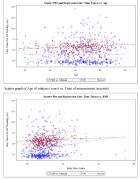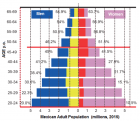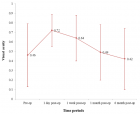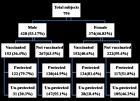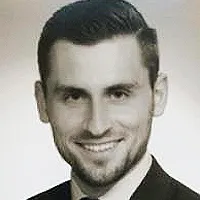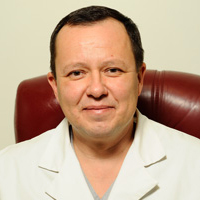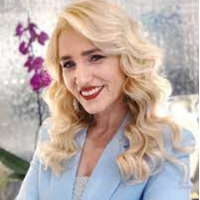Abstract
Research Article
Clown language training in Dental education: Dental Student’s Perspective
Siddharth Tevatia*, Richa Dua, Vinita Dahiya, Nikhil Sharma, Rahul Chopra and Vidya Dodwad
Published: 09 May, 2017 | Volume 2 - Issue 2 | Pages: 049-056
Clowning is a form of humour. It is an art form that invites play, interaction, and laughter. Clown Care is a programme in hospitals and medical centres involving visits from specially trained hospital clowns. Clowning helps patients to focus on something other than their illness. Olsson et al. and Spitzer suggested that clown care could create a warm climate, promote good interpersonal relationships, and relieve feelings of frustration, anxiety, or hostility. Hospital clowns work worldwide as a health humanization resort, providing interplay with patients, family and staff creating a positive emotional state that fosters affirmative environmental conditions. This type of activity varies greatly in terms of professionalism, accountability and artistic methods. Promotion of emotional and psychosocial well-being of patients transcends opportunities for oral health promotion activities in hospitals, schools and community. Previous research reports on clown training reflects attitude-building potential for the healthcare students provided that it is performed in a deep, essential, strict and continuous fashion in a facultative manner rather than mandatory allowing the student to build his own artistic, professional and personal path. Thus, the prospect of introducing training curriculum of this underrated non-technical skill for dental students in Indian dental education system needs to be harnessed.
Read Full Article HTML DOI: 10.29328/journal.johcs.1001011 Cite this Article Read Full Article PDF
Keywords:
Clown; Clown Doctor; Humor; Positive emotions; Complementary
References
- Carp Ch. Clown therapy: The creation of a clown character as a treatment intervention. The Arts in Psychotherapy. 1998; 25: 245-255.
- Warren B. Fools for health: Introducing clown-doctor to Windsor hospitals. In B. Warren (Ed.), creating a theatre in your classroom and community. Ontario, Canada: Captus Press. 2002; 225-246.
- Adams P. Humor and love: the origination of clown therapy. Postgrad Med J. 2002; 78: 447-448. Ref.: https://goo.gl/vG3MrN
- Koller D, Gryski C. The life threatened child and the life enhancing clown: towards a model of therapeutic clowning. Evid Based Complement Alternat Med. 2008; 5: 17-25. Ref.: https://goo.gl/ClkJ8j
- Tener D, Lev-Wiesel R, Franco NL, Ofir S. Laughing through this pain: medical clowning during examination of sexually abused children: an innovative approach. J Child Sex Abuse. 2010; 19: 128-140. Ref.: https://goo.gl/UXba0j
- Bennett MP, Zeller, JM, Rosenberg L, McCann J. The effect of mirthful laughter on stress and natural killer cell activity. Altern Ther Health Med. 2003; 9: 38-45. Ref.: https://goo.gl/q4MRf4
- Winnicott DW. [1971]. Playing and reality. London and New York: Routledge. 2005.
- Green T. (Ed). Folklore: An encyclopedia of beliefs, customs, tales, music, and art. Santa Barbara, CA: ABC CLIO. 1997.
- Landy R. Persona and performance: The meaning of role in drama, therapy, and everyday life. New York: The Guilford Press. 1993.
- Handelman D. The clown as a symbolic type. In Models and mirrors: towards anthropology of public events. New York: Cambridge University. 1990; 236-262.
- Leef BL, Hallas D. The sensitivity training clown workshop: Enhancing therapeutic communication skills in nursing students. Nurs Educ Perspect. 2013; 34: 260-264. Ref.: https://goo.gl/zGBLZh
- Nuttman-Shwartz, O Scheyer R, Tzioni H. Medical clowning: Even adults deserve a dream. Soc Work Health Care. 2010; 49: 581-598. Ref.: https://goo.gl/F2nGc0
- Higueras A, Carretero-Dios H, Muñoz JP, Idini E, Ortiz A, et al. Effects of a humor-centered activity on disruptive behavior in patients in a general hospital psychiatric ward. International Journal of Clinical and Health Psychology. 2006; 6: 53-64. Ref.: https://goo.gl/OJklzp
- Landy R. The couch and the stage: Integrating words and actions in psychotherapy. Lanham, MD: Jason Aronson. 2008.
- Grinberg Z. Medical clowning: Therapeutic intervention in short term and continuous stress situations that stem from illness and hospitalization: The drama therapy viewpoint. Unpublished MA thesis, Lesley University, Graduate School of Arts and Social Sciences. 2009.
Figures:

Figure 1

Figure 2

Figure 3

Figure 4
Similar Articles
-
Clown language training in Dental education: Dental Student’s PerspectiveSiddharth Tevatia*,Richa Dua,Vinita Dahiya,Nikhil Sharma,Rahul Chopra,Vidya Dodwad. Clown language training in Dental education: Dental Student’s Perspective . . 2017 doi: 10.29328/journal.johcs.1001011; 2: 049-056
Recently Viewed
-
Host biomarkers for early diagnosis of infectious diseases: A comprehensive reviewArindam Chakraborty*,Singh Monica. Host biomarkers for early diagnosis of infectious diseases: A comprehensive review. Int J Clin Microbiol Biochem Technol. 2019: doi: 10.29328/journal.ijcmbt.1001005; 2: 001-007
-
Diabetes and red blood cell parametersMd. Sadikuj Jaman*,Md. Sohanur Rahman,Rubaiya Rafique Swarna,Joyanto Mahato,Md. Milon Miah,Mosa. Ayshasiddeka. Diabetes and red blood cell parameters. Ann Clin Endocrinol Metabol. 2018: doi: 10.29328/journal.acem.1001004; 2: 001-009
-
Indian spices and Caffeine treatment for Obesity and Cardiovascular diseaseIan James Martins*. Indian spices and Caffeine treatment for Obesity and Cardiovascular disease. Ann Clin Endocrinol Metabol. 2018: doi: 10.29328/journal.acem.1001005; 2: 010-014
-
New pharmacological strategies in some metabolic endocrine disorder under a toxicological approachLuisetto M*,Ghulam Rasool Mashori,Cabianca luca. New pharmacological strategies in some metabolic endocrine disorder under a toxicological approach. Ann Clin Endocrinol Metabol. 2018: doi: 10.29328/journal.acem.1001006; 2: 015-021
-
Exercise preserves pancreatic β-cell mass and function in obese OLETF ratsJiawei Zhao,Zhihong Yang,Min He,Qinghua Wang,Renming Hu*. Exercise preserves pancreatic β-cell mass and function in obese OLETF rats. Ann Clin Endocrinol Metabol. 2018: doi: 10.29328/journal.acem.1001007; 2: 022-029
Most Viewed
-
Impact of Latex Sensitization on Asthma and Rhinitis Progression: A Study at Abidjan-Cocody University Hospital - Côte d’Ivoire (Progression of Asthma and Rhinitis related to Latex Sensitization)Dasse Sery Romuald*, KL Siransy, N Koffi, RO Yeboah, EK Nguessan, HA Adou, VP Goran-Kouacou, AU Assi, JY Seri, S Moussa, D Oura, CL Memel, H Koya, E Atoukoula. Impact of Latex Sensitization on Asthma and Rhinitis Progression: A Study at Abidjan-Cocody University Hospital - Côte d’Ivoire (Progression of Asthma and Rhinitis related to Latex Sensitization). Arch Asthma Allergy Immunol. 2024 doi: 10.29328/journal.aaai.1001035; 8: 007-012
-
Causal Link between Human Blood Metabolites and Asthma: An Investigation Using Mendelian RandomizationYong-Qing Zhu, Xiao-Yan Meng, Jing-Hua Yang*. Causal Link between Human Blood Metabolites and Asthma: An Investigation Using Mendelian Randomization. Arch Asthma Allergy Immunol. 2023 doi: 10.29328/journal.aaai.1001032; 7: 012-022
-
An algorithm to safely manage oral food challenge in an office-based setting for children with multiple food allergiesNathalie Cottel,Aïcha Dieme,Véronique Orcel,Yannick Chantran,Mélisande Bourgoin-Heck,Jocelyne Just. An algorithm to safely manage oral food challenge in an office-based setting for children with multiple food allergies. Arch Asthma Allergy Immunol. 2021 doi: 10.29328/journal.aaai.1001027; 5: 030-037
-
Snow white: an allergic girl?Oreste Vittore Brenna*. Snow white: an allergic girl?. Arch Asthma Allergy Immunol. 2022 doi: 10.29328/journal.aaai.1001029; 6: 001-002
-
Cytokine intoxication as a model of cell apoptosis and predict of schizophrenia - like affective disordersElena Viktorovna Drozdova*. Cytokine intoxication as a model of cell apoptosis and predict of schizophrenia - like affective disorders. Arch Asthma Allergy Immunol. 2021 doi: 10.29328/journal.aaai.1001028; 5: 038-040

If you are already a member of our network and need to keep track of any developments regarding a question you have already submitted, click "take me to my Query."








